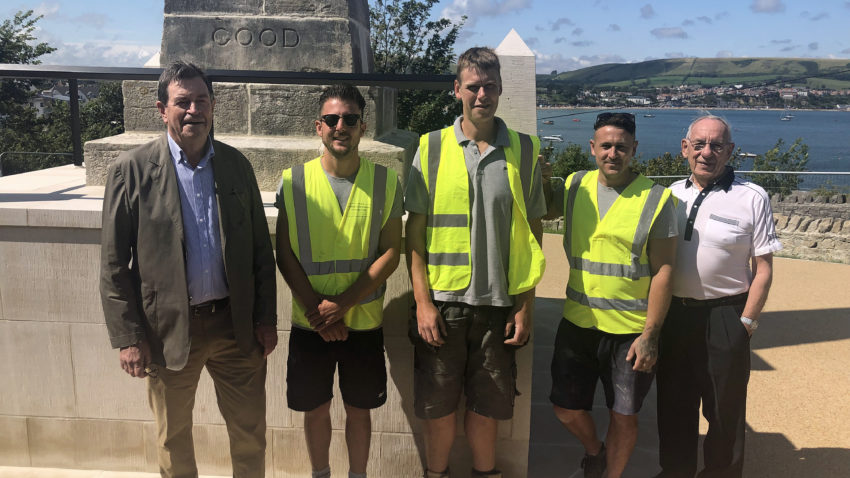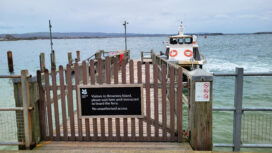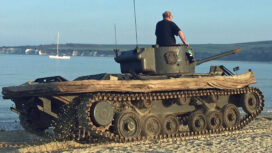The obelisk in memory of Queen Victoria’s husband, Albert, that lay in ruins for 50 years has at last been re-erected in Swanage.
The team that made it all possible, met up at the site in Prince Albert Gardens to see the fruits of their labour, just before formally handing it back to Swanage Town Council, now that work has been completed.
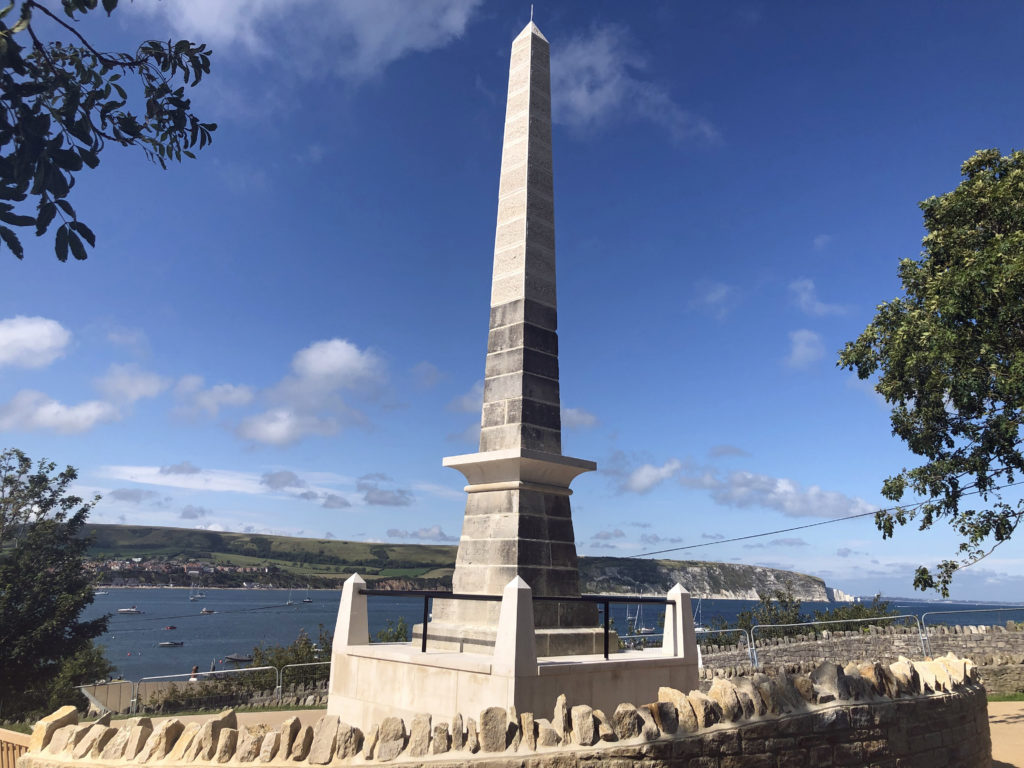
The Prince Albert Memorial now re-erected in Prince Albert Gardens, close to where it’s believed the prince once disembarked from a boat and visited Swanage
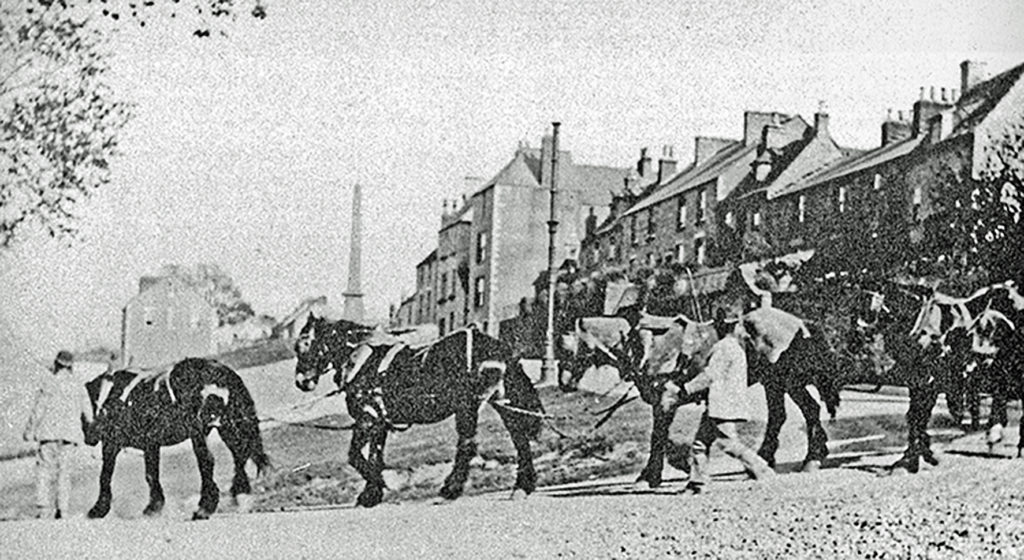
The Prince Albert Memorial was originally located in the High Street in Swanage
Restore the monument to its full glory
This is the culmination of many attempts to restore the monument to its full glory, since it was dismantled and removed.
Originally the Prince Albert Memorial, believed to be the first in the country to be built after his untimely death at the age of 42 in 1861, was located in the High Street in Swanage, next to where the British Legion is now.
The Purbeck stone column was taken down in 1971 to make way for a new row of houses.
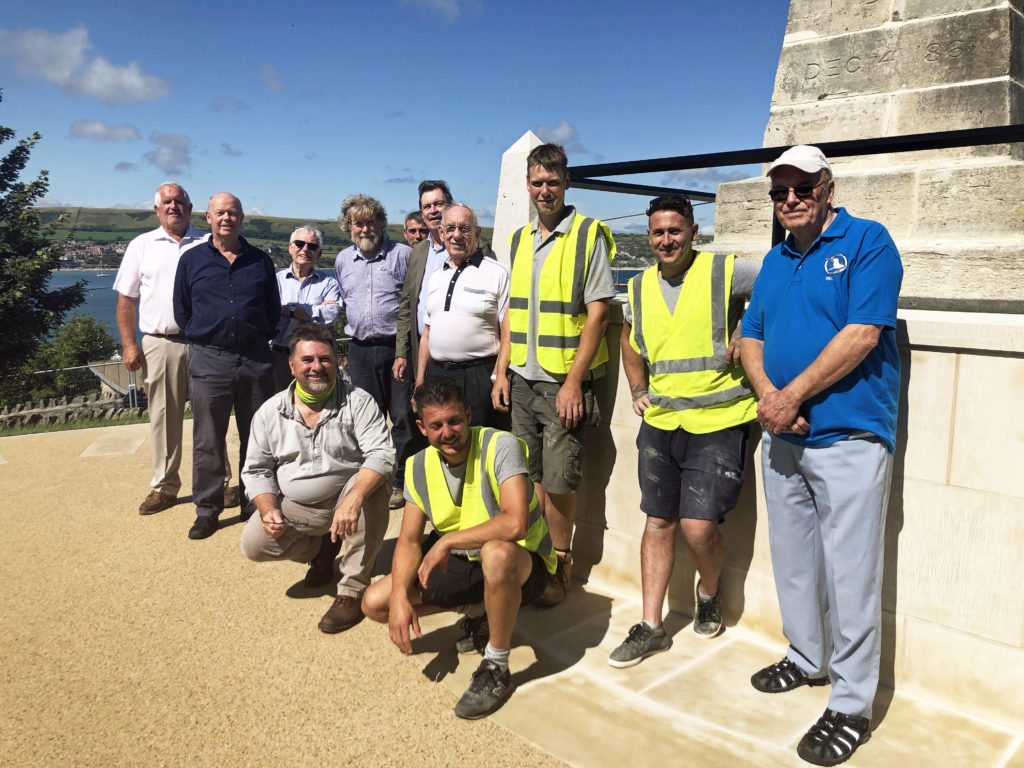
The team who made it happen on site. Back row, left to right: Councillor Mike Bonfield, David Burt, Bob Field, Brian Bugler, Justin Warren, Bob Foster, Mike Sloggett, Tom Harding, Mark Stone and Mel Norris. Front row, left to right: Simon Collis and Ed Cross
Give something back to Swanage for the community
The cost of the restoration of the obelisk has been paid for by a generous donation from just one man – Mike Sloggett.
Mike explained that he doesn’t have children to leave his money to, so wanted to give something back to Swanage for the community to enjoy. He has strong links to the town since his father bought a cottage near Peveril Point in the 1930s. He said:
“I’ve been coming to Swanage since 1935 to a property at Peveril Point. During a visit in 1942, I witnessed a bomb dropping on Westminster Bank in Institute Road and on Swanage Dairy on the corner of Taunton Road and the High Street both in the same week; unfortunately, there were casualties at the Bank.”
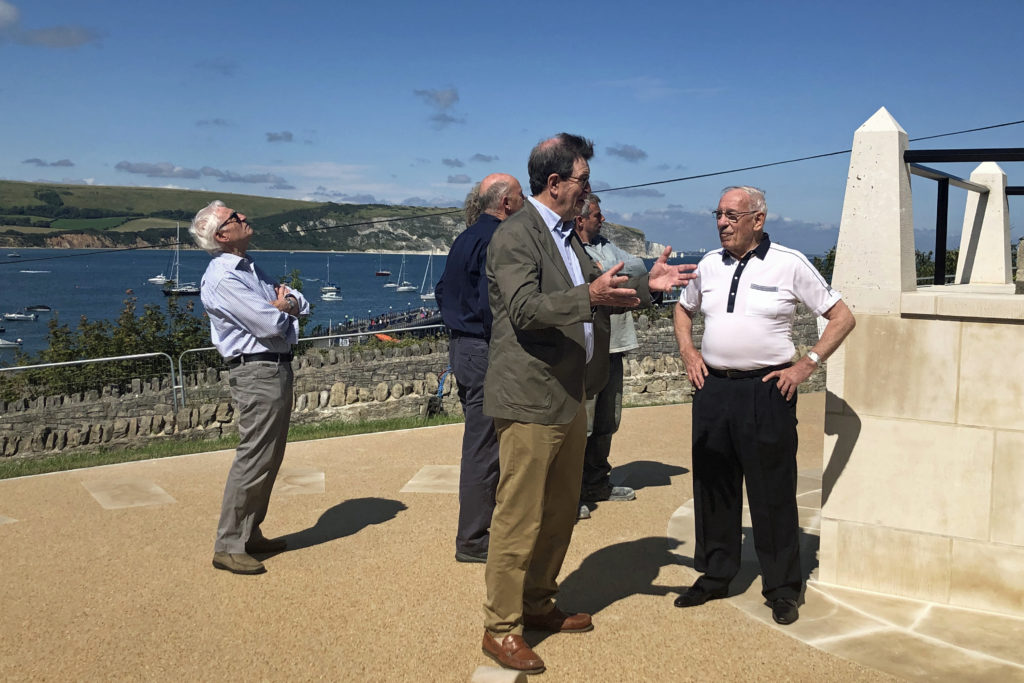
How big? Local historian, Bob Field (left) looks up to the top of the obelisk, while chair of the Swanage and Purbeck Development Trust and project manager, Bob Foster (centre) chats to the generous benefactor, Mike Sloggett (right)
“Giving Swanage a lasting, historical attraction”
Since then, Swanage has developed and changed but Mike wanted to see the town retain some of its lost heritage, and it was a chance reading of an article in a magazine that led to his involvement in the Prince Albert Memorial.
He added:
“Over the years I had known about the Prince Albert Memorial and the many unsuccessful attempts to re-erect it but it wasn’t until 2019 when I purchased Dorset Life Magazine, that an article about the memorial motivated me to find the writer, Robert Field.
“I contacted Mike Bonfield, who was then the Mayor of Swanage, to arrange a meeting with Bob Field along with Bob Foster from the Swanage and Purbeck Development Trust.
“At this meeting, Bob Foster offered to help with re-erecting the memorial in any way possible; his offer was taken up and with his help and background made this project a great success.
“Without his knowledge, enthusiasm and patience, the memorial would be a fading memory; he must be given full credit for seeing this through to the end – giving Swanage a lasting, historical attraction. It is because of him it has only taken two years to complete, something which previously has taken 50 years, without success!”
However without Mike’s financial backing, the project would have been unlikely to have got off the ground.
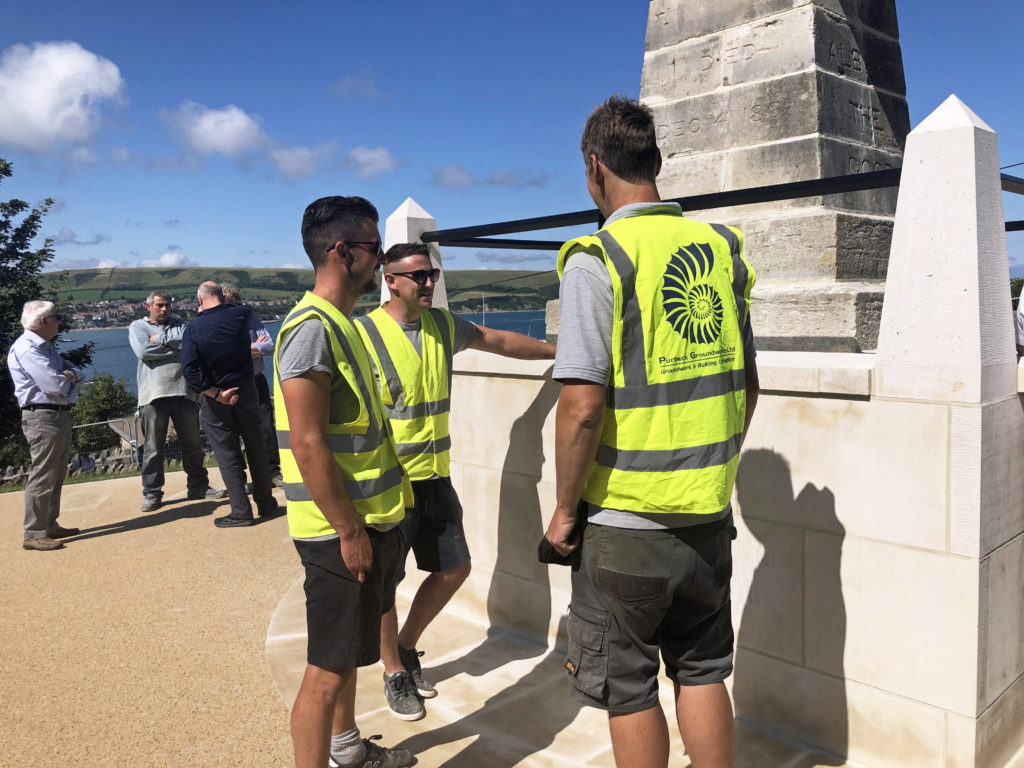
The team from Purbeck Groundworks and Building undertook the project from start to finish
Took place during the Covid pandemic
The planning process took place during the Covid pandemic and undeterred by such obstacles, building work started in February 2021.
The project was overseen by the Swanage and Purbeck Development Trust and project managed by the trust’s chair, Bob Foster. The construction work was undertaken by contract manager, Simon Collis from Stress Heritage Engineering along with sub-contractor manager, Ed Cross from Purbeck Groundwork and Building.
Simon Collis said:
“I’ve absolutely loved working on this – I’ve worked on lots of projects like the QE2 Bridge across the Thames and on the London Underground but to be able to work on this, less than a mile from my own home has been brilliant.
“We’ve worked with the best quality of materials and a fantastic team – Ed Cross, along with Mike Sloggett and Bob Foster have been great. I think it’s fair to say that it’s one of the best projects I’ve ever worked on – definitely one for the CV!
“I’m also proud that it is a proper Swanage job, using all the local trades including of course the stonemasons.”
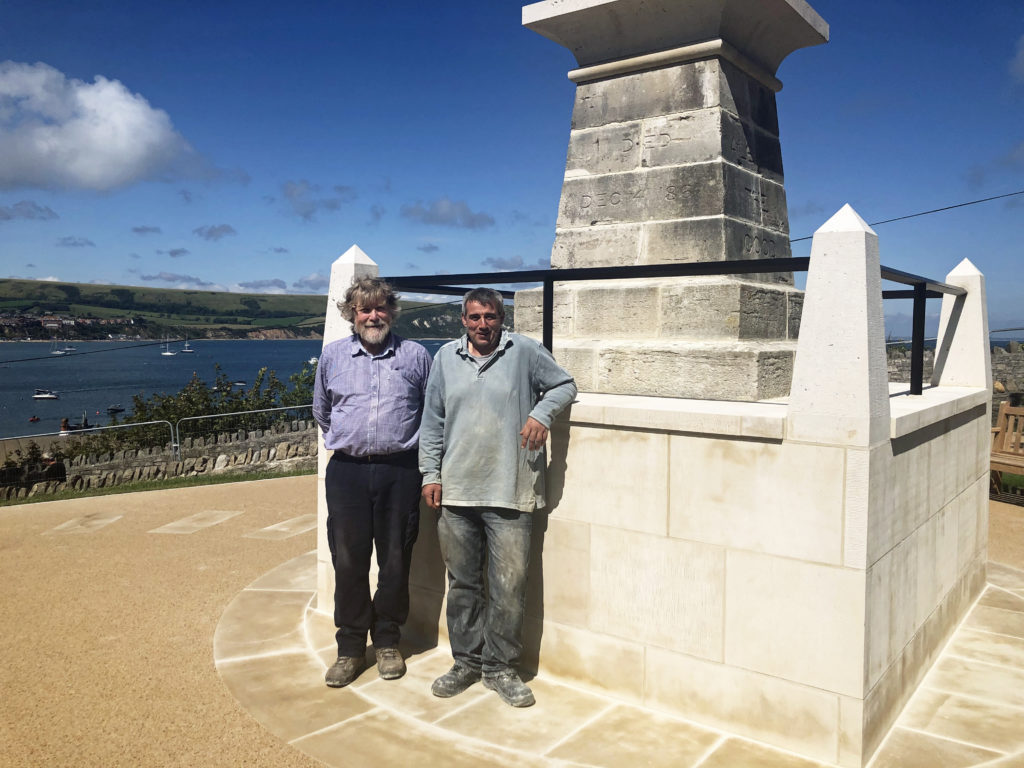
Stonemasons, Brian Bugler and Justin Warren from Haysom Purbeck Stone
New stone work
While most of the base and the lower half of the obelisk was saved, some of it had gone missing over the years and needed replacing.
Undertaking the new stone work was Brian Bugler and Justin Warren from Haysom Purbeck Stone. Justin cut the stone into blocks, while Brian worked two days a week for five months, fine tooling the blocks to match the original.
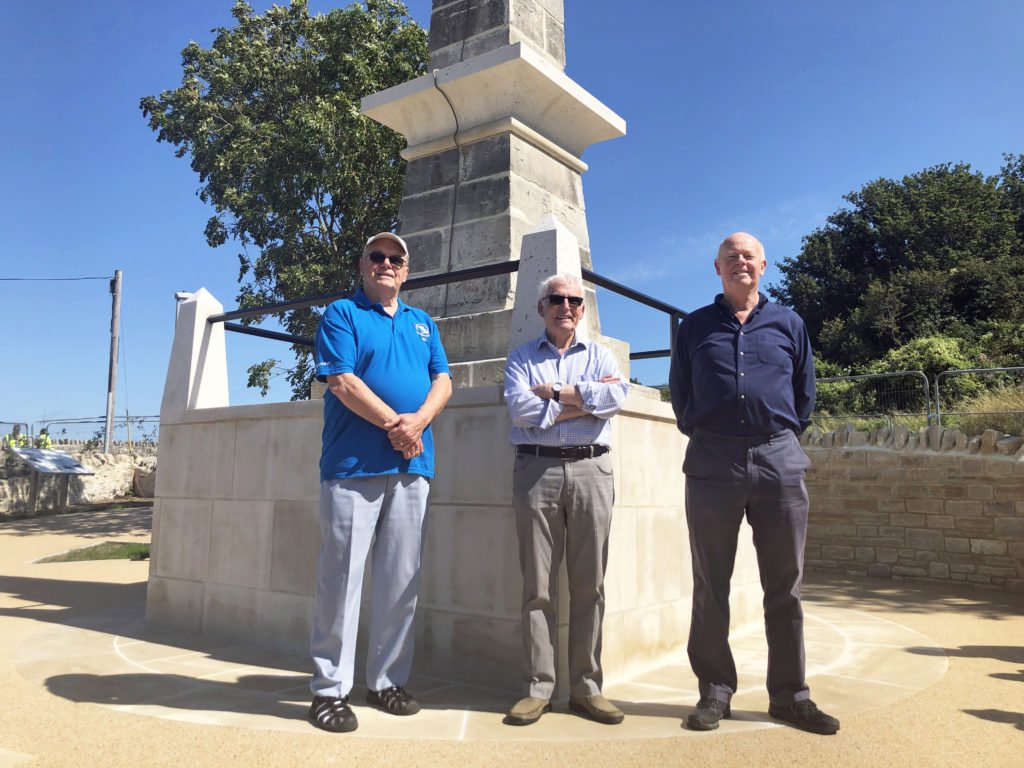
Left to right: Mel Norris from Swanage Museum, Bob Field, historian, and David Burt, distant relation to George
Originally the idea of George Burt
The idea of the memorial was originally that of George Burt, the Victorian benefactor who lived in Swanage and was responsible for building Durlston Castle and the Town Hall.
Four weeks after Prince Albert’s death in 1861, George Burt wrote to the rector of Swanage, Reverend Duncan Travers, and proposed that the town should:
“Erect an obelisk of native stone with a short but suitable inscription…and that the inhabitants generally should subscribe money to pay for its erection”
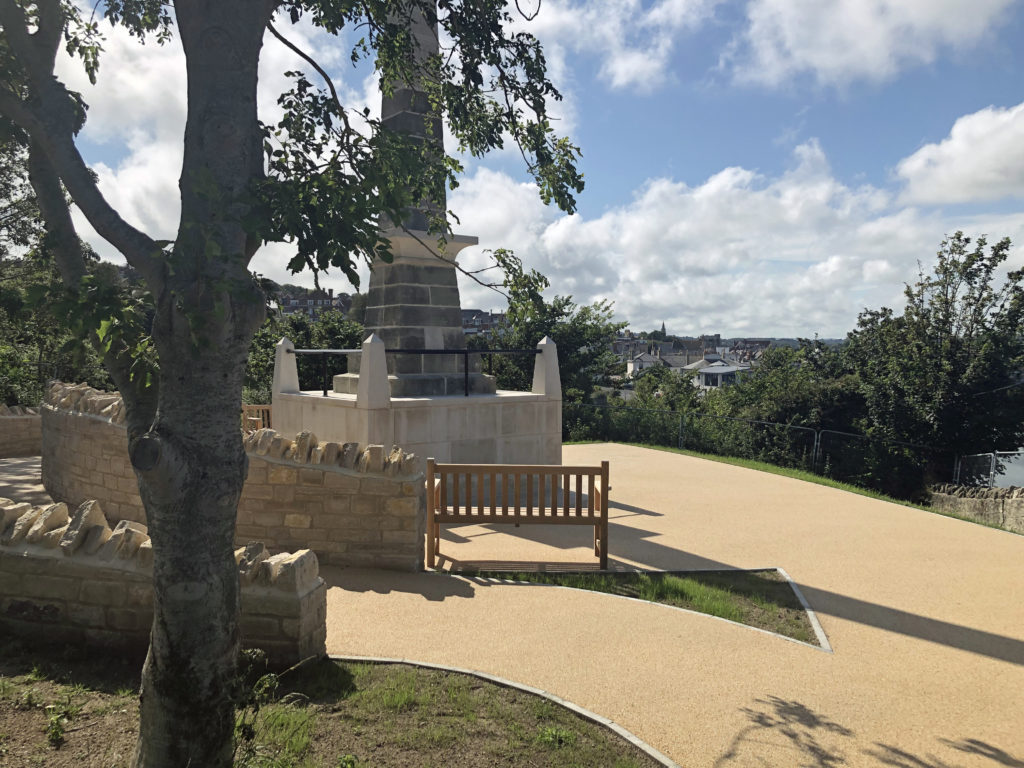
The memorial with its view to the west across Swanage is a good spot to watch the sunset
“I think it’s brilliant!”
Appropriately 160 years later, David Burt, a distant relation of George, who lives in Langton Matravers was at the memorial to see it finished. He said:
“It’s so good to see it eventually rebuilt. Along with others, like David Lewer, I wrote letters to try and get it restored. So having been part of the team pushing to get this done, I think it’s brilliant!”
“The very first memorial to be erected”
Probably best described as the catalyst that made it happen, is Bob Field, a local historian who wrote the original article about the memorial that caught Mike Sloggett’s eye and inspired him to fund the project. Bob said:
“To discover that this was the very first memorial to be erected to commemorate the life of Prince Albert meant that it was even more important to ensure it was restored.
“Other towns around the country looked at erecting statues or clock towers, but they, of course, took a lot more time to create. It’s traditional for an obelisk to commemorate the dead and Swanage was able to quickly complete the memorial.”
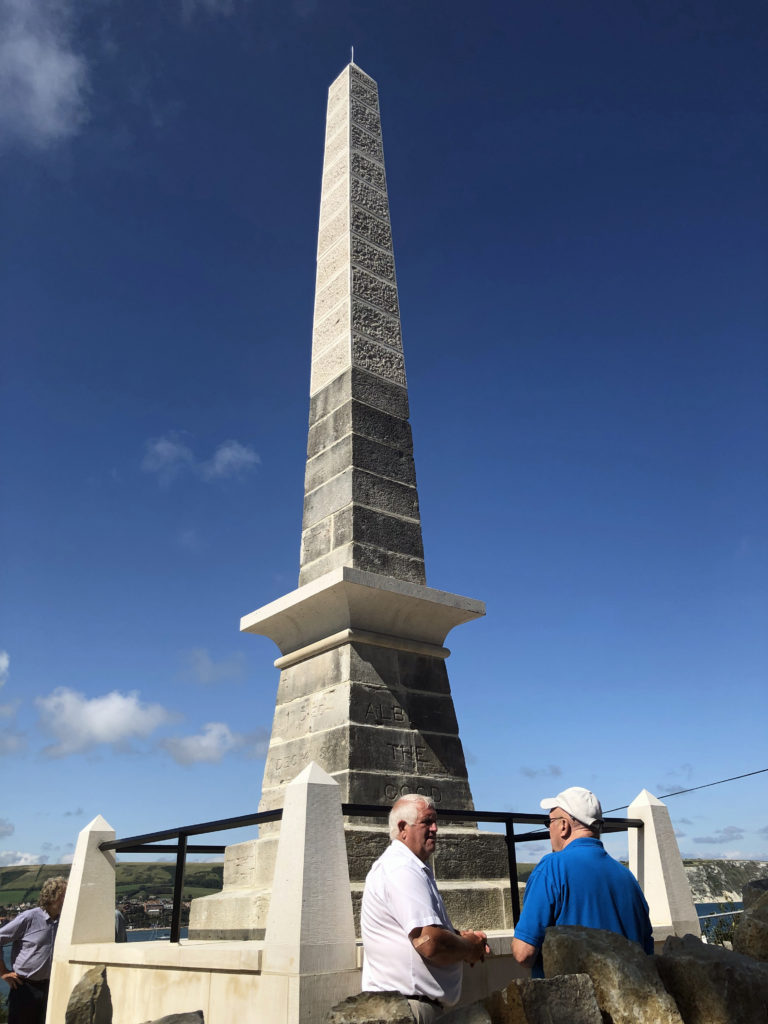
Former Swanage Town Mayor, councillor Mike Bonfield and the chair of Swanage Museum, Mel Norris, compare notes
Prince Albert – a reformer and progressive
Prince Albert, consort and husband to Queen Victoria, was considered a reformer and progressive with liberal views for the era. One of his first public positions was to become President of the Society for the Extinction of Slavery.
He was against child labour and believed in the principles of free trade. He supported the repeal of the Corn Laws, which kept the cost of grain artificially high, which was beneficial to landowners but not for those who couldn’t afford bread.
As an academic, he successfully campaigned for education reform and the widening of university subjects to include modern history and the natural sciences.
Bob Field added:
“The more I read about Prince Albert, the more admiration I have for him. It’s only fitting that his memorial in Swanage has been restored.”
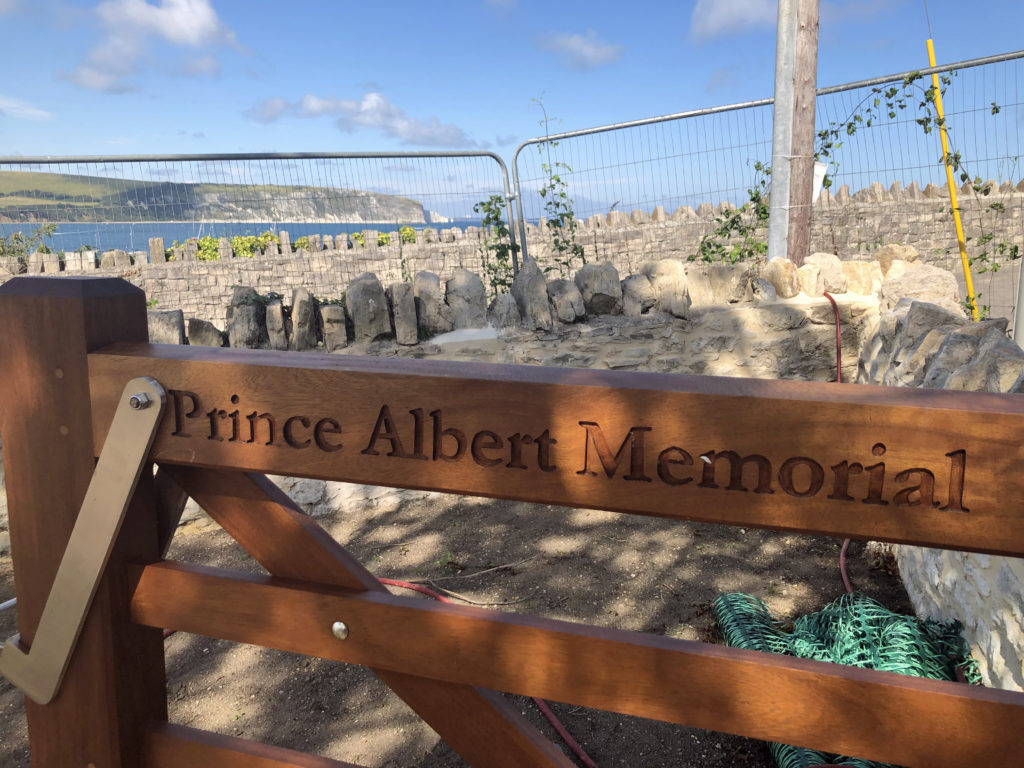
The metal fencing is expected to be removed by the last week of August 2021
Sit and admire the view
Once the site is formally handed back to Swanage Town Council, the builders will be able to remove the wire fencing, and it will be open for everyone to sit and admire the view.
This should be by the last week of August 2021. The official opening is expected in autumn 2021.
